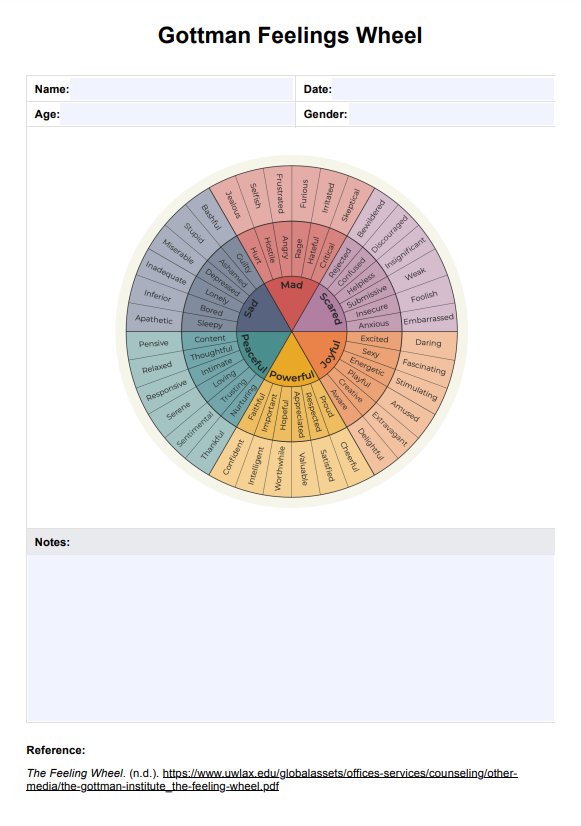It's a type of activity wherein the referring physician and the client use the feeling wheel to narrow down the core emotion/s the patient is feeling.

Gottman Feelings Wheel
Assist your patients with identifying and understanding their emotions with the help of a Gottman Feelings Wheel. Click here for a free template copy!
Use Template
Gottman Feelings Wheel Template
Commonly asked questions
The six core emotions are mad, sad, scared, joyful, powerful, and peaceful.
Our feelings wheel template can be used as a guide, tool, reference, or even document that one can use to track their progress.
EHR and practice management software
Get started for free
*No credit card required
Free
$0/usd
Unlimited clients
Telehealth
1GB of storage
Client portal text
Automated billing and online payments











